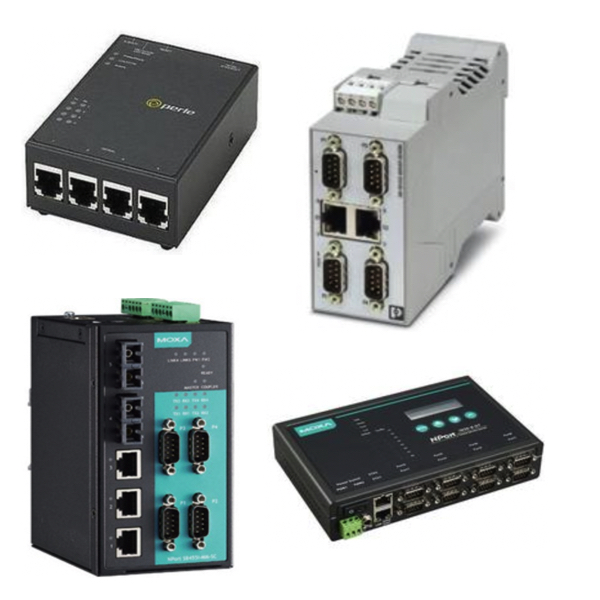Serial Device Servers

Serial device servers are networking devices that are specialized for working with serial devices. These devices connect serial devices—like industrial machines or barcode scanners—to an Ethernet network. They convert serial signals to network data and enable remote access and centralized management of the formerly isolated devices. And they do this for a distilled set of commands that are characteristic of serial communications (commands that work with RS-232, for instance), without trying to understand or convert to the more complex set of commands an Ethernet device would usually understand.
Serial device servers usually have several modes to run in, like TCP server mode, TCP client mode, and even serial tunneling, to flexibly fit into all sorts of network environments. They have stable Ethernet interfaces and direct connections to old-school serial devices. Some models come with win32 utilities for setting up the devices, power options for installation flexibility, and rock-solid features for making them reliable in critical applications. They've got the smarts to work just as well in the office as they do on the factory floor.
More Information about Serial Device Servers
Also, network management is improved when using a serial device server. It provides network management by giving the user secure, remote access to serial devices. When using a server, troubleshooting and maintenance become quite simple. Why? Because the server allows centralized monitoring and control of data. By using this technology, the user greatly reduces the need to access devices physically. For that reason, the serial device server is a cost-effective way to make old technology accessible via an Ethernet network and extend its life.
FAQs
In a serial to Ethernet set-up, does a serial port deliver serial data to a serial console?
Yes, in a serial to Ethernet setup, a serial port can deliver serial data to a serial console, enabling communication and configuration of connected devices.
Basics of Switches, Routers & Hubs
Ethernet hubs, switches and routers connect computers to networks, devices and other computers.
Ethernet hubs are the least intelligent of the three devices. They simply take any message that is received and transmits it to every other device connected to that hub. For example, if CPU 1 on a network wants to send a message to CPU 5, it will send that message through the hub.The hub will then take that message and send it out to every connected device on that hub regardless of the intended target. When CPU 5 receives that message and wants to respond, it will send its response through the hub which sends it to every connected device. Ethernet hubs do not manage any data that is sent and tend to bog down networks. They also do not offer much security for the network. For these reasons, Ethernet hubs are are being replaced with network switches.
Switches transmit data from one device to another on the same network. Unlike a hub, switches use a switch table to learn where data came from and where to send it. Switch tables store Mac addresses and device ports. By storing this data, a switch can operate more efficiently than a hub, greatly reducing the traffic within the network.
Routers transfer data between devices while learning the location of those devices within the network. They are also a junction between two or more networks. An example of this would be a home router where the home network is connected to the Internet. Another example would be when the router connects two or more networks with different business functions. In addition to connecting two or more networks, a router offers important security features that help protect the network.

